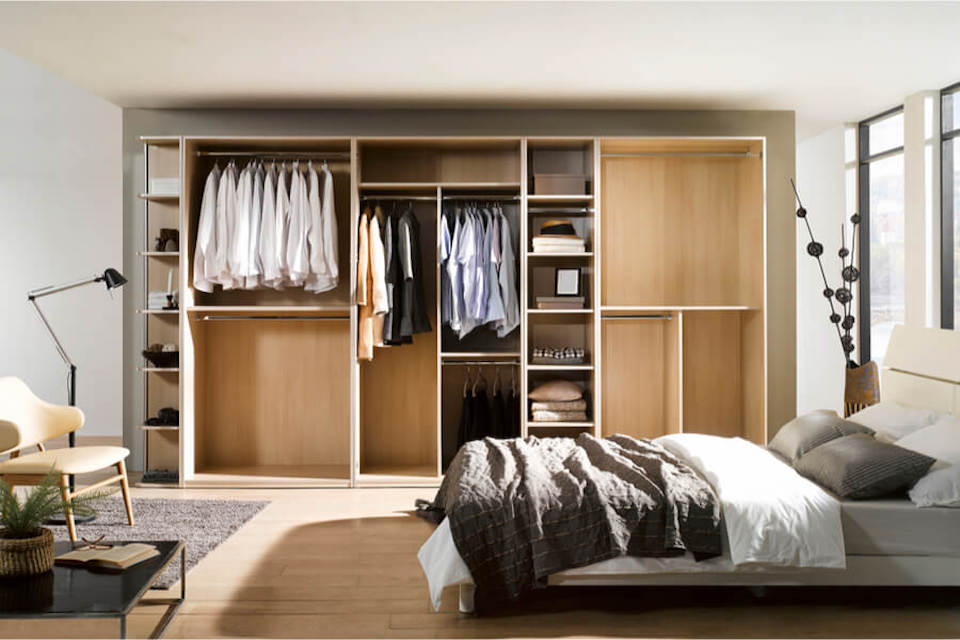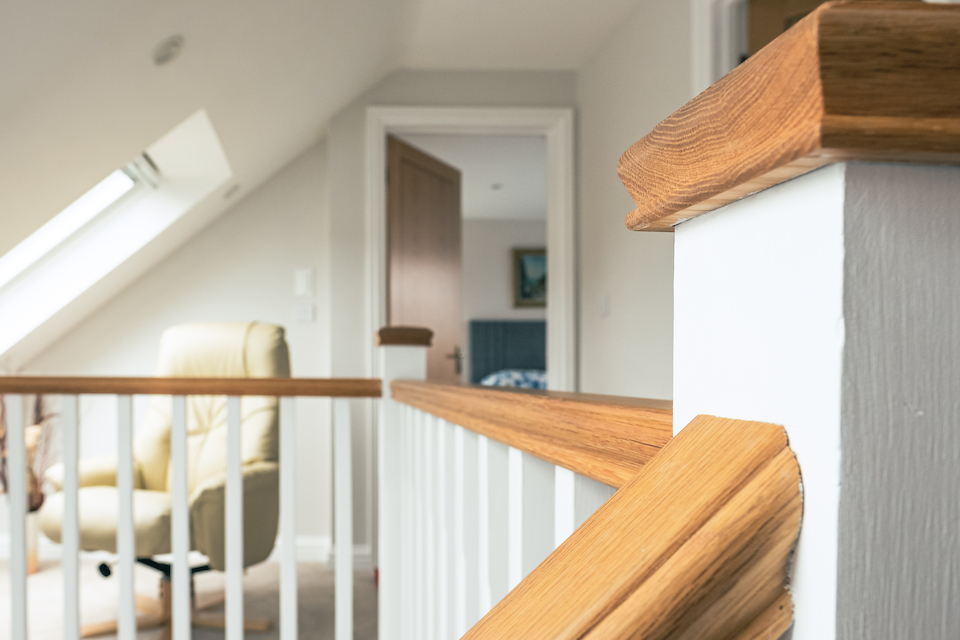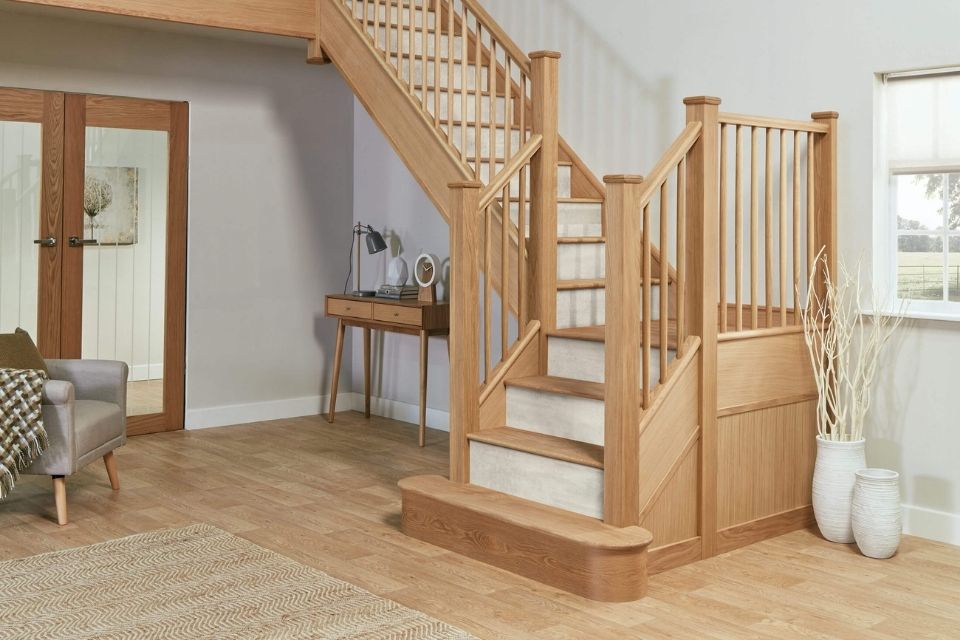How Much Does A Carpenter Charge?
Wait! Before we get to that, let's establish what a carpenter actually does...
In the most basic terms, carpenters and joiners put together and install wooden structures and fittings
They are also highly skilled at repairing existing wooden fittings and furniture.
The average cost for hiring a carpenter or joiner in the UK is around £20-£40 per hour. The joiner costs and carpenter costs tend to be around the same amount.
Carpenters and joiners cut, shape, fit and assemble wood to make various items, using a variety of professional tools.
Bear in mind these additional cost factors...
Those based in the London area can expect to pay more for this type of work than those based in the North or other parts of the UK.

Carpenter Prices
For a better idea of the joiner prices or carpenter prices you can expect, we have created the table below that highlights the various prices for different jobs:
| JOB DESCRIPTION | AVERAGE COST |
|---|---|
| Refinishing furniture | £20-£30 per hour |
| Repairing a cabinet | £20-£25 per hour |
| General carpentry | £20-£30 per hour |
| Fine woodworking | £30-£40 per hour |
| Build a fitted wardrobe | £750-£1250 |
| Supply and fit skirting board | £225-£300 per room |
| Hang a new set of doors | £320-£800 |
| Install garden decking | £450-£1000 |
| Laminate install | £15-£25 per square metre |
| Engineered wood install | £20-£30 per square metre |
| Natural wood install | £30-£40 per square metre |
| Herringbone pattern install | £60-£80 per square metre |
| Design and create a wooden chair | £250-£400 |
| Design and install shelves in an alcove | £200-£300 |
| Build small bespoke furniture piece | £300-£500 |
| Build large bespoke furniture piece | £600-£1000 |
| Put together flat-pack furniture | £80-£120 |
| Lay flat prepared flooring in an average-sized room | £200-£400 |
What are the Supply Costs of Carpenter Jobs?
If you are planning on doing some woodwork yourself, then you may be interested in the cost of the supplies for doing carpentry or joinery jobs. When it comes to this type of work, there are a lot of different tools required depending on the job.
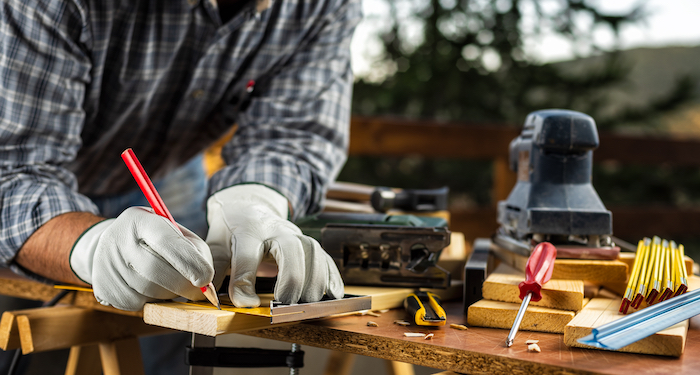
Below is a table showing the various tools that you may need for carpentry or joinery work and their average costs:
| TYPE OF SUPPLIES | AVERAGE COSTS |
|---|---|
| Tape measure and square | £10-£50 |
| Circular saw | £50-£150 |
| Jigsaw | £40-£120 |
| Hand saw | £20-£80 |
| Plane or sander | £20-£60 |
| Hammer | £8-£40 |
| Mallet | £12-£50 |
| Power drill | £50-£150 |
| Screw gun | £100-£200 |
| Woodworking bench | £100-£400 |
| Safety equipment | £50-£120 |
| Pack of 1500 multi-sized nails | £12-£20 |
| Pack of 800 assorted screws | £12-£20 |
| Wood glue | £10-£15 |
You will also need to consider the costs of the wood for the job. This will vary depending on the type of wood that you choose, the quality of the wood, and where you purchase the wood from. If you are completing a large project, you can save some money by buying your wood at wholesale prices.
What are the Additional Costs of Carpentry & Joinery Jobs?
There are several additional costs that you may need to consider when it comes to joinery or carpentry jobs. Below is a list of the additional things that you may need to budget for with this type of work:
Minimum Fee
When hiring a carpenter or joiner to complete work for you, they will usually charge a minimum fee for the work. After this initial fee, most carpenters or joiners will then charge hourly fees or daily fees depending on how big the job is.
Number of Tradespeople
The number of tradespeople can affect the overall cost that you will pay for joinery or carpentry work. If the job at hand is quite large, then you may need to hire more than one tradesperson to complete the work for you.
The more tradespeople that are working on the job, the more you can expect to pay for the work.

Additional Time
As with all jobs, there are some things that may go wrong, and this will result in additional time being added to the job. The longer the job takes to complete, the more you can expect to pay overall for the work. Additional time is usually charged at an hourly rate.
Tradesmen Costs for Carpentry & Joinery Jobs
If you are purchasing your materials separately, then you may need to know how much it may cost to pay the tradesperson or tradespeople alone. In this section, we will take a look at the costs that you can expect to pay a joiner or carpenter to complete woodwork for you.
Carpenter and joiner prices can vary depending on the type of job and your location.
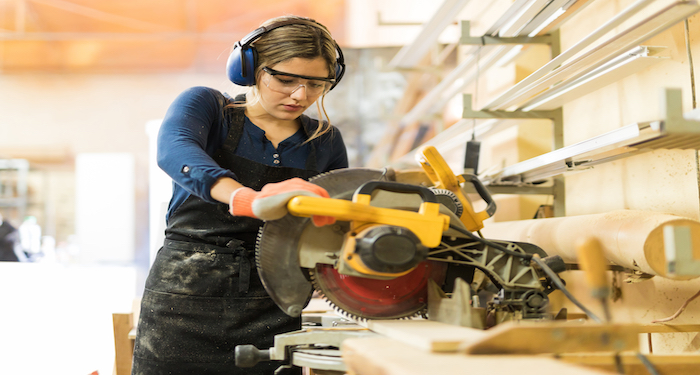
The average cost for hiring a carpenter or joiner in the UK is around £20-£40 per hour per contractor. Those based in the London area can expect to pay more for this type of work than those based in the North or other parts of the UK.
Some tradespeople may charge a daily rate if you are getting a lot of work done. If you are paying a joiner or carpenter a daily rate, then you can expect them to charge around £150-£250 per day per contractor.
How Long Do Carpentry & Joinery Jobs Take?
If you are getting some carpentry or joinery work done, then you may be interested in how long the job might take. Below is a table showing the timescales that you can expect for various jobs:
| JOB DESCRIPTION | DURATION |
|---|---|
| Refinishing furniture | 1-3 days |
| Repairing a cabinet | 2-6 hours |
| Fine woodworking | 2-14 days |
| Build a fitted wardrobe | 2-4 hours |
| Fit skirting board in one room | 1-2 days |
| Hang a door | 1-2 hours |
| Install garden decking | 1-2 days |
| Create a wooden chair | 1-2 weeks |
| Install shelves in an alcove | 4-8 hours |
| Build small bespoke furniture piece | 1-3 weeks |
| Build large bespoke furniture piece | 3-6 weeks |
| Put together flat-pack furniture | 1-3 hours |
| Lay flat prepared flooring in an average-sized room | 3-6 hours |
Types of Carpentry & Joinery Jobs
Carpentry and joinery work is quite vast and involves many different job types. Below is a list of the different fields of carpentry and joinery work:
Rough Carpentry
Rough carpentry, also known as structural or framing carpentry, focuses on the foundational framework and structural integrity of a building. This type of work plays a crucial role in the early stages of construction. It helps lay the groundwork for all of the other trades to do their job. Unlike finish carpentry, rough carpentry is not concerned about how the work looks like. It concentrates on the strength, durability, and accuracy of structures.

The types of tasks included in rough carpentry are:
- Constructing wall and floor framing
- Installing roof trusses and rafters
- Building timber frameworks for extensions and outbuildings
- Fitting joists, studs, beams, and subflooring
- Ensuring structures are level, square, and securely anchored
Rough carpenters will work alongside architects, builders, and other tradespeople, following building plans and making sure their work is compliant with building regulations.
As it involves large-scale structural work, rough carpentry often requires power tools like circular saws, nail guns, and framing hammers. Projects can range from home extensions to new builds, timber decks, and even temporary frameworks for scaffolding or concrete formwork.
It is one of the most common and essential fields in carpentry and construction, forming the backbone of residential and commercial buildings before more detailed interior work can begin.
Joist Work
Joist work involves installing horizontal frameworks for floors and ceilings. Floor joists distribute the load of the structure above and are essential for maintaining a building's stability. This work is typically done by skilled joiners or rough carpenters early in the construction process, before the flooring or ceilings are installed.
Joist installation requires precise measurements, knowledge of load-bearing calculations, and familiarity with building regulations. Floor joists must be installed level and be evenly spaced to support loads over time.
Joist work jobs involved:
- Measuring and marking joist positions according to building plans
- Cutting and fitting timber or engineered wood joists
- Securing joists to wall plates, beams, or joist hangers
- Adding noggins or blocking for added support
- Inspecting joists for accuracy and alignment
Although joist work itself is not focused on appearance, it does lay the foundation for the next phase which is floor installation. Precision is therefore key as any unevenness in the joists can affect the quality of the final floor finish.
Trim Carpentry
Trim carpentry focuses on the installation of decorative and functional mouldings and trims. These finishing touches are what help enhance the appearance of a room by creating clean and refined transitions between walls, floors, ceilings, and openings such as doors and windows.
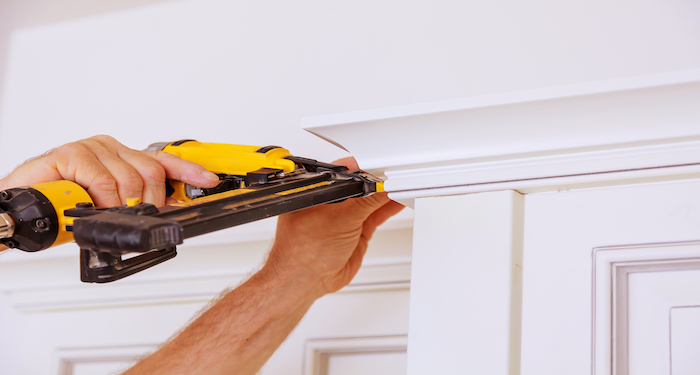
Trim carpenters work with precision tools and often use higher-end materials. Their role typically comes toward the end of a construction or renovation project, where attention to detail and a polished finish are key.
Common trim carpentry tasks include:
- Designing, cutting, and fitting skirting boards
- Installing architraves around doors and windows
- Creating decorative crown moulding and ceiling cornices
- Fitting picture rails, dado rails, and wall panelling
- Building and installing mantels, shelves, and window casings
This type of carpentry often involves working with various tools, including mitre saws, coping saws, and specialist adhesives or fixings. Some trim carpenters may also stain, varnish, or paint the woodwork to get the trim work to its final finish.
Trim carpenters require a high level of skill, patience, and craftsmanship to produce flawless results that will help elevate the interior design of the room.
Cabinet Carpentry
Cabinet carpentry, often referred to as cabinetmaking, is a specialised field of finish carpentry. It focuses on the design, construction, and installation of cabinets and custom-built furniture. Cabinet makers are skilled tradespeople who combine structural knowledge with fine woodworking techniques to create beautifully functional storage solutions.
This type of carpentry often involves creating fitted or freestanding cabinets for various parts of the home, including the kitchen, bathroom, utility rooms and living spaces.
As well as making cabinets, many cabinet carpenters can also produce other types of indoor or outdoor furniture such as:
- Dining tables and benches
- Bookshelves and display units
- Built-in seating and window seats
- Custom patio furniture and garden storage
This type of carpentry often overlaps with interior design and joinery, especially when creating bespoke solutions that must match the style and layout of a room. Cabinet makers will usually finish the product, using paints or stains, to enhance the durability and appearance of the final product.
Hiring a multi-skilled carpenters bring versatility to any project, combining structural, finishing, and custom work with precision. Their broad expertise makes them an invaluable addition to a house renovation.
Framing Work
Framing work is a core aspect of structural carpentry. It involves the construction of frameworks that support the whole building. This includes the basic structure of walls, floors, and roofs, which help form the essential shape and strength of a residential or commercial build.
While rough carpentry covers a broad range of structural tasks, framing carpenters specialise specifically in assembling the load-bearing framework. As their job has a narrower focus, framing jobs are often quicker to complete than broader rough carpentry tasks.
Framing work tasks include:
- Reading and interpreting blueprints and construction plans
- Building wall studs, partitions and headers
- Installing floor systems, ceiling joists, and roof trusses
- Securing frames to foundations and subfloors
- Ensuring structural alignment, spacing, and bracing
Framers often work with dimensional timber, engineered wood products, and structural panels like OSB (oriented strand board) or plywood.
This work is physically demanding and typically performed outdoors or in partially completed buildings. It’s a fast-paced and essential stage of the construction process, setting the tone for everything that follows.
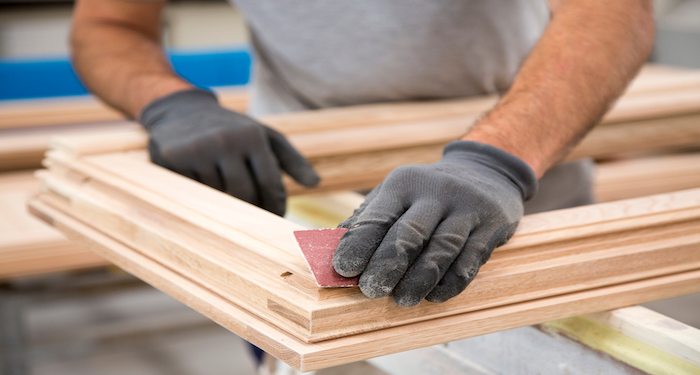
Roofing Work
Roofing carpentry focuses on building roof supports. This includes the planning, construction, and maintenance of rafters, beams, joists, and trusses. These are elements that are critical for any pitched or flat roofing system. A skilled roofing carpenter, or "roofer joiner," will make sure the roof is not only strong and stable but also capable of supporting tiles, slates, insulation and other weatherproofing layers.
This type of work typically involves working with architects and structural engineers to follow roof plans and load-bearing specifications accurately. The carpentry must also accommodate things like dormers, skylights, chimneys, and drainage systems while maintaining structural integrity.
Key tasks involved in roofing carpentry include:
- Constructing and fitting roof trusses and rafters
- Installing ridge boards, collar ties, and purlins
- Building dormer window structures or gable ends
- Framing for flat roofs, hip roofs, and vaulted ceilings
- Ensuring precise angles and load-bearing capacity
Because the roof is one of the most exposed parts of a structure, precision and robust construction techniques are vital in this stage of the build.
High-quality roofing carpentry not only ensures durability and weather resistance but also improves energy efficiency and paves the way for accurate tile or slate fitting, insulation, and ventilation.
Flooring Work
Some carpenters or joiners specialise in installing flooring. A detailed area of carpentry that requires both structural knowledge and a good eye for finish. This work can involve fitting a wide variety of flooring types from hardwood and parquet to bespoke timber designs.
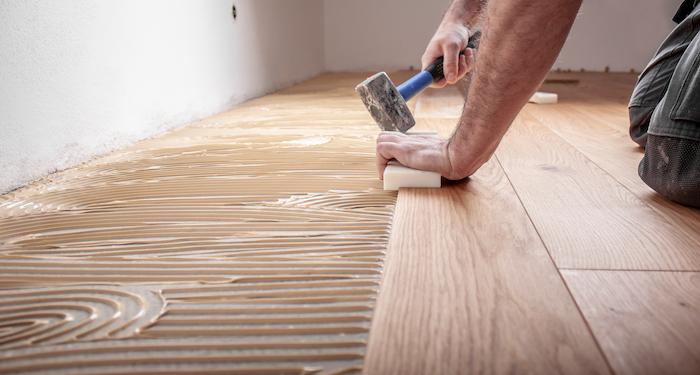
Flooring carpenters may be hired for two main types of projects:
- Custom Flooring Builds – These involve designing, cutting, and installing completely bespoke timber floors. These projects could include intricate patterns such as herringbone, chevron, or parquet inlays.
- Pre-manufactured Flooring Installation – In these cases, the carpenter or joiner installs factory-produced boards or tiles such as laminate or vinyl click flooring. A professional will ensure accurate alignment and provide a professional finish.
Tasks involved in flooring work include:
- Preparing and levelling subfloors (concrete, timber, or screed)
- Measuring and cutting boards with precision to fit around obstacles
- Laying planks or panels with tight joins and expansion gaps
- Fitting underlay, vapour barriers, or insulation layers as needed
- Applying finishes such as sanding, staining, sealing, or waxing for custom wood floors
Some carpenters also offer restoration services for older wooden floors, including sanding, gap filling, and refinishing to bring tired timber back to life.
Door Installers
Some carpenters or joiners specialise in the fitting and creation of internal and external doors. Whether you’re upgrading for security, energy efficiency, or style, a skilled door installer ensures the job is done with precision.
You can choose to hire a carpenter to design and build a bespoke door tailored to your home’s dimensions or simply to install a pre-manufactured door you’ve already purchased. Either way, professional installation will ensure smooth operation, durability and proper insulation.
Common door-related tasks include:
- Hanging internal wooden doors (panel, flush, glazed)
- Fitting external doors (front, back, patio, French, or bifold)
- Trimming or planing doors to fit existing frames
- Installing or upgrading door frames, architraves, and thresholds
- Fitting locks, handles, hinges, and other door hardware
- Weatherproofing and sealing external doors
For period homes or unique spaces, bespoke door creation can be a great option. A joiner can custom-make a door to match traditional mouldings, specific timber types, or unusual sizes. This is especially useful when restoring heritage properties or if you want to create a cohesive design throughout your home.
FAQs
Q: What is the difference between a carpenter and a joiner?
A: Carpentry and joinery are both construction trades. Joiners join wood in a workshop, whereas carpenters construct the building elements of a house or other building. Below are some examples of joiner work and carpentry work to give you a better idea of the differences between the two trades:
Joiner
- Making doors
- Making window frames
- Creating fitted furniture
- Building stairs
Carpenter
- Fitting staircases
- Fitting flooring
- Installing cupboards
- Installing shelving
- Fixing window frames
Q: What qualification does a carpenter need?
A: There are no specific carpenter qualifications or joiner qualifications needed. However, an employer will expect some on-site carpentry experience.
If you are hiring a carpenter or a joiner, then you should always check to make sure they have the relevant skills and experience needed to complete the work that you need. It’s a good idea to ask for photos of previous work to ensure the contractor has the relevant skills.
Many carpenters will also provide carpenter or joiner insurance for your peace of mind.
Q: Why should I hire a professional carpenter or joiner?
A: Hiring a professional carpenter or joiner can be beneficial for many reasons. Their expertise means that you can get the best results for what you need. The work will also usually take much less time to complete.
Professionals will also take care of waste removal for you, so you don’t need to worry about clearing up. This can take a lot of stress out of your new installation.
Q: What skills are needed to be a carpenter?
A: There are a number of essential skills that are needed to be a successful carpenter. One of the most important ones is attention to detail. A carpenter will also be required to know what tools to use for each part of the job.
Some simple maths skills are required to work out precise measurements. A carpenter or joiner should also be in very good health as it can be very physically demanding work.
Q: How much does it cost to replace my front door?
A: If you are planning on hiring a carpenter or joiner to install a new front door for you, then you may be interested in the costs involved with this type of work.
The average cost for a new front door is around £500-£2500 depending on the materials used and your location in the UK.
If you are planning on having a bespoke door installed, then this could cost up to around £4000, depending on the design and the choice of materials.
Q: Can I paint my kitchen cupboards?
A: Yes, you can. If you notice your cupboards are becoming scratched or if your kitchen cupboards are becoming dull, then you should consider painting them.
For wooden cupboards, you should use satinwood paint that has a quick-drying formula so that the wood remains protected and enhanced.
To hide scratches on your kitchen cupboards, you may want to consider matte paint as this can help to cover imperfections. High-gloss paints are not the best for hiding damage.
However, these paints work well on cupboards with faded paint as they can easily be applied over the top to improve the appearance and make it more durable.




